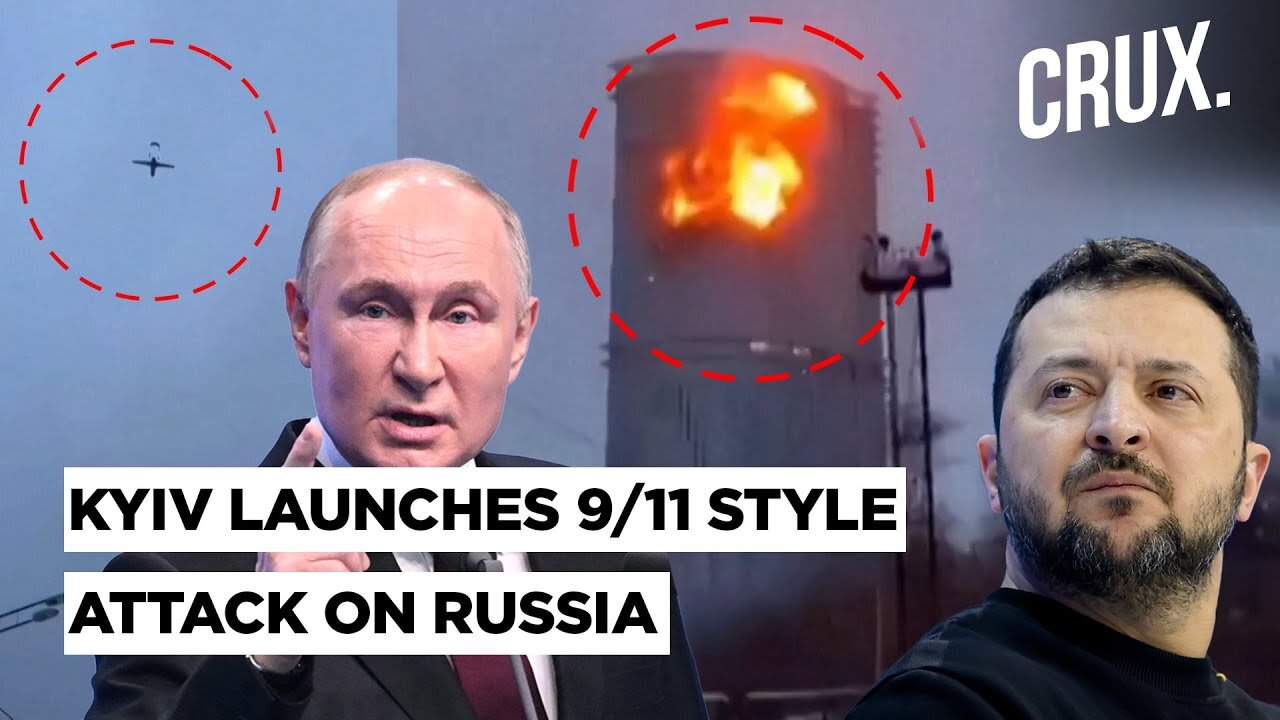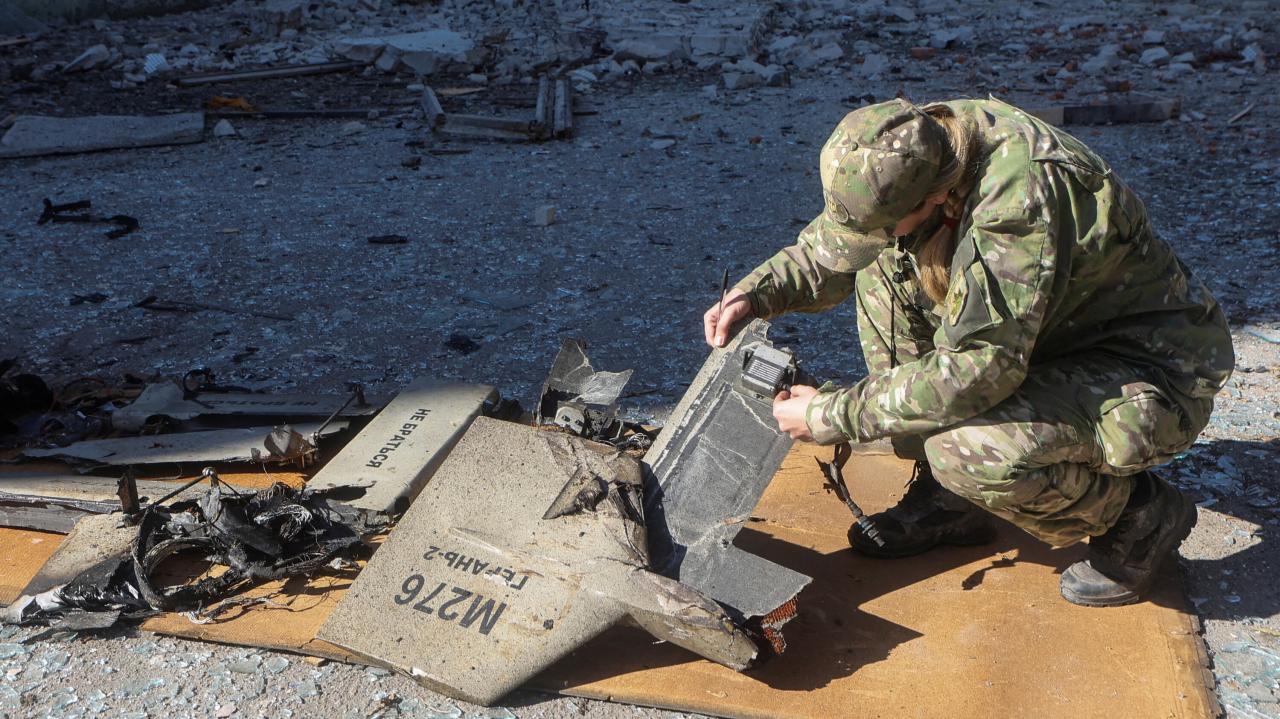Drone attack Russia: The escalating use of unmanned aerial vehicles (UAVs) against Russian territory has become a significant development in the ongoing geopolitical landscape. This surge in drone attacks raises crucial questions about the actors involved, their motivations, and the implications for regional stability and global security. We’ll explore the various types of drones employed, their technological capabilities, and the strategic locations targeted within Russia.
From analyzing the geographic distribution of attacks and the actors suspected of carrying them out, we will delve into the impact these actions have had on Russia’s military infrastructure, economy, and international standing. We’ll also examine Russia’s counter-drone strategies and the technological advancements that are shaping the future of this increasingly complex conflict.
Drone Attacks Against Russia: An Overview
The increasing frequency of drone attacks targeting Russia has become a significant geopolitical development. This article provides a comprehensive overview of the types of drones used, geographic locations targeted, actors involved, impacts, Russia’s response, and future trends. The information presented is based on publicly available reports and analyses, and aims to provide a factual and informative account of this evolving situation.
Recent drone attacks on Russia have highlighted the increasing use of unmanned aerial vehicles in modern warfare. These attacks often utilize commercially available drones, and understanding the technology is crucial. For example, check out the range of DJI drones available in Canada via this link: dji drone canada. This gives you an idea of the types of drones that could potentially be involved in such conflicts, making it clear that the tech behind these attacks isn’t always highly specialized military equipment.
Types of Drones Used in Attacks Against Russia

Several types of drones, varying in size, capabilities, and origin, have been employed in attacks against Russia. These range from commercially available models modified for military purposes to more sophisticated, purpose-built systems.
Recent drone attacks on Russia have highlighted the increasing use of these unmanned aerial vehicles in conflict. If you’re interested in learning more about drones, figuring out which DJI drone to buy can be a good starting point; check out this helpful guide: which dji drone to buy. Understanding drone capabilities is crucial when considering their impact on modern warfare, as seen in the escalating drone attacks on Russia.
| Drone Model | Range | Payload | Targeting System |
|---|---|---|---|
| Example Drone 1 (e.g., modified commercial UAV) | Up to 100km (estimated) | Small explosives, propaganda leaflets | GPS-assisted, potentially manual |
| Example Drone 2 (e.g., a larger, more advanced UAV) | Up to 500km (estimated) | Larger explosives, potentially shaped charges | GPS, inertial navigation, potentially advanced targeting systems |
| Example Drone 3 (hypothetical example) | Up to 1000km (estimated) | Precision guided munitions | Satellite-linked, AI-assisted targeting |
Geographic Locations of Drone Attacks
Drone attacks against Russia have targeted various locations, demonstrating a strategic focus on military and symbolic sites. The frequency and intensity of attacks vary across regions.
- Moscow: Attacks on Moscow highlight the vulnerability of the capital and aim to project a sense of insecurity.
- Military Bases: Attacks targeting military bases in Western Russia aim to disrupt logistics and operations.
- Industrial Areas: Attacks on industrial zones, particularly those related to defense production, aim to disrupt the Russian war effort.
- Southern Russia: Attacks in the south suggest an effort to target infrastructure supporting the war in Ukraine.
A map illustrating the frequency and distribution of drone attacks across Russia would show a higher concentration of attacks in western and southern regions, reflecting the proximity to Ukraine and the strategic importance of these areas. The map would use a color-coded system to represent the frequency of attacks, with darker shades indicating more frequent attacks. Specific locations would be marked, allowing for a visual representation of the geographic spread of the attacks.
Actors Involved in Drone Attacks Against Russia

Determining the actors responsible for drone attacks against Russia is complex, often relying on circumstantial evidence and claims of responsibility. Several groups and entities have been implicated.
| Actor | Motivation | Tactics | Evidence |
|---|---|---|---|
| Ukraine (claimed by some sources) | Disrupt Russian military operations, damage infrastructure, weaken morale. | Coordinated swarms of drones, precision strikes. | Open-source intelligence (OSINT), statements by Ukrainian officials (often denied or not confirmed). |
| Other groups (speculative) | Various motivations, including anti-government sentiment, support for Ukraine, or other geopolitical objectives. | Opportunistic attacks, potentially using modified commercial drones. | Limited and often inconclusive evidence. |
Impact and Consequences of Drone Attacks, Drone attack russia
Drone attacks have had significant consequences for Russia, both militarily and economically. The long-term impacts are still unfolding.
An infographic illustrating the economic and social impact would show charts and graphs representing the cost of repairing damaged infrastructure, the impact on military readiness, disruptions to supply chains, and potential effects on public morale and confidence in the government. It would also visually represent the number of casualties (if any) and the overall economic cost of the attacks.
Russia’s Response to Drone Attacks

Russia has implemented various measures to counter drone attacks, but their effectiveness remains debated.
Recent drone attacks on Russia are raising serious questions about the escalating conflict. To stay updated on the latest developments and broader implications of this technology, check out the comprehensive coverage at drone news today for a wider perspective on drone technology and its use in conflict. Understanding these events requires staying informed about the evolving drone landscape, especially as drone attacks on Russia continue to make headlines.
- Electronic Warfare Systems: Deployment of systems designed to jam or disrupt drone signals.
- Air Defense Systems: Use of air defense systems, although their effectiveness against small drones is questionable.
- Improved Surveillance: Enhanced surveillance systems to detect and track incoming drones.
- Cybersecurity Measures: Efforts to improve cybersecurity to prevent drone hijacking or control system compromise.
Technological Advancements and Future Trends

Technological advancements in drone technology will likely continue to shape the nature of future conflicts. The increasing autonomy, range, and payload capacity of drones will present new challenges for defense systems.
| Advancement | Impact on Attacks | Impact on Defense | Potential Scenario |
|---|---|---|---|
| AI-assisted targeting | Increased accuracy and effectiveness of attacks. | Need for more sophisticated countermeasures, including AI-based defense systems. | Swarm attacks coordinated by AI, overwhelming existing defenses. |
| Increased range and endurance | Ability to strike targets further away from the launch point. | Need for wider area coverage and more robust early warning systems. | Attacks on strategically important targets deep within Russian territory. |
Final Review
The increasing frequency and sophistication of drone attacks against Russia mark a significant shift in modern warfare. Understanding the technology behind these attacks, the actors involved, and the consequences for Russia and the broader international community is crucial. While technological advancements continue to enhance drone capabilities, so too do countermeasures. The ongoing conflict highlights the need for a nuanced understanding of this evolving battlefield and its implications for future conflicts.
Key Questions Answered: Drone Attack Russia
What are the most common types of drones used in these attacks?
Reports suggest a variety of commercially available and modified drones are used, ranging from small quadcopters to larger fixed-wing UAVs.
How effective are Russia’s counter-drone measures?
The effectiveness of Russia’s counter-drone measures is debated. While they’ve implemented various systems, the continued attacks suggest these measures aren’t fully effective.
What is the long-term impact of these attacks on Russia’s economy?
The long-term economic impact is still unfolding but includes potential disruptions to supply chains, infrastructure repair costs, and decreased investor confidence.
Who benefits from these attacks?
Attributing direct benefit is complex. However, some argue that these attacks aim to weaken Russia’s military and economic power, potentially benefiting opposing factions or nations.
